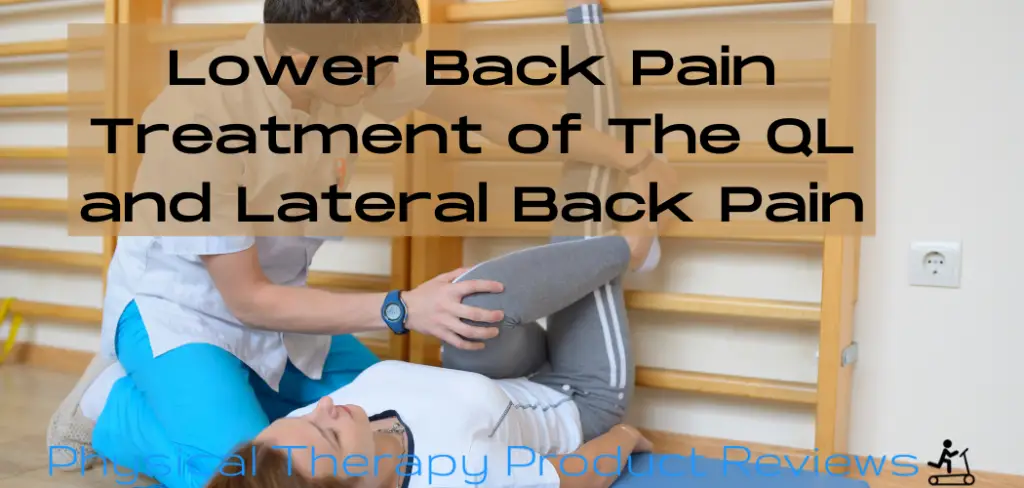Although many things can set people apart, back pain in the QL muscle region is not one of them. It is reported that over 65 million people complain of lower back pain per year in the US alone. If you are one of the many individuals who fall into this category, you may be wondering if there is anything you can do to treat or manage the symptoms.
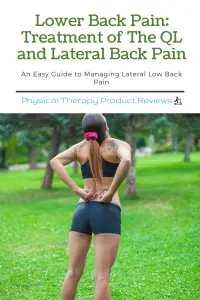
If you are experiencing pain or tightness in the QL muscle region of your back, some common treatments include:
- Strengthening and Stability Exercises
- Self Myofascial Release
- Stretching and mobility exercises
- Trigger point Treatment and injections
These and some other things can be done to help treat or reduce the pain you are feeling in the QL muscle region.
If you would like to know more about what causes pain in the QL muscle region as well as some ways you can potentially prevent (or at least minimize) the discomfort that you are experiencing, continue reading for helpful information.
What’s Causing Your Aching Back?
Before you can solve a problem, it is important to understand where the issue originates and what is causing it. Once you know the answer to those questions, you can move on to solving the problem so you can resume your normal life.

Many factors contribute to why so many people suffer from lower back pain, the most common being:
- A lack of daily exercise and stretching
- Hard manual labor
- Poor lifting techniques
- Poor posture
- Residual pain from an injury
- Sitting for long periods of time
- Standing for long periods of time
As mentioned above, millions of people suffer from lower back pain in the QL muscle region, and these numbers will only continue to increase until we start taking better care of ourselves by being proactive in our daily routines.
It is often said that prevention is the best medicine, and this is one of the instances where that statement is spot on. When you think of back pain, you likely think of people who are doing hard manual labor or working on their feet all day.
The world has changed drastically over the past several years. More and more people are engaged in employment that requires them to live a more sedentary life of working from behind a desk or their living room couches via Zoom™ meetings and other remote platforms.
The Less You Move, The Less You Move
Our bodies are not so different from that of the Tin Man in the Wizard of Oz in the respect that if we stop moving, we will stiffen up, our muscles become sore, and it is hard to move.
If you work in a profession that requires a lot of sitting and screen time, you can likely relate to feeling stiff and sore in your lower back by the end of the day.
Movement is medicine…. or as others like to say, motion is lotion.
The same goes for those who perform strenuous manual labor or repetitious movements, such as those who work in a factory.
Next, we will discuss common treatments and ways to help prevent and relieve the pain you may be experiencing in the QL muscle region.
Tips for Relieving Your Aching Back
Now that you know the common causes of pain in the QL muscle region of the back, you can treat your current pain and create a routine to prevent pain from returning in the future.
Core Strengthening
Think of the core of your body as the trunk of a tree. If a tree has a weak trunk, it will not be able to hold its branches up to the sky; eventually, it will come crashing down. If you do not work on strengthening your core, you will notice more pain in your lower back and other areas of your body as they try to compensate for the weakness of your core.
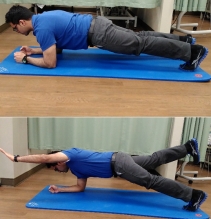
Core strengthening should be a part of your daily or at least your weekly routine. Although it may be tough at first, you will be pleasantly surprised after some time to see that you are experiencing less pain and a better range of motion in your back.
Regularly stretching your back is a great way to stay limber and keep from getting sore. The following activities can also be incorporated into your daily or weekly routine to strengthen your body and mind, which can reduce the effects of stress:
- Pilates
- Tai Chi
- Yoga
QL Back Stretches
The QL muscle is located in the lower back region. It is a long and flat muscle that attaches to the pelvis on each side of the spine and extends upward along the vertebrae. The QL muscle is responsible for stabilizing the pelvis and spine and assisting in the movement of these areas.
When the QL muscle becomes tight, it can pull on the pelvis and spine, causing pain in these areas. Stretching the QL muscle can help to relieve this pain.
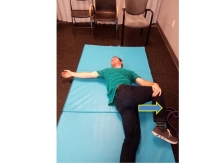
To stretch the QL muscle, lie on your back with your knees bent and your feet flat on the floor. Place your hands on your lower back and slowly roll your knees to one side, keeping your feet on the floor. Hold this stretch for 30 seconds, then repeat on the other side.
You can also do this stretch standing up. Stand with your feet shoulder-width apart and your hands on your hips. Shift your weight to one side and lean over, keeping your back straight. Hold this stretch for 30 seconds, then repeat on the other side.
Related Topics:
- 5 Easy Stretches for Low Back Pain You Can Do Sitting Down
- 7 Amazing Morning Stretches to do Daily for Back Stiffness
- Stretching or Strengthening: What’s More Important After a Back Injury?
Self Myofascial Release to the QL Muscle
Self-myofascial release (SMR) is a type of self-massage that can be used to relieve pain and tightness in the muscles. When performed on the QL muscle, SMR can help to release tension and knots in this muscle.
To do SMR on the QL muscle, lie on your back with a foam roller placed under your lower back. Place your hands on the floor beside you for support. Slowly roll up and down the length of your lower back, stopping when you find a tender spot. Hold this spot for 30 seconds, then move on to another area. Repeat this process until you have worked all areas of your lower back.
You can also do this exercise up against the wall.
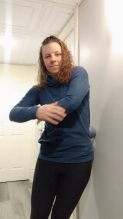
You can also do this by lying on your back or on your side with a tennis ball underneath your back muscles. Apply pressure to the tennis ball with your body weight and roll it around until you find a tender spot. Hold this spot for 30 seconds, then move on to another area. Repeat this process until you have worked all areas of your back.
Lift With Your Legs
You have been told to lift with your legs and not with your back a million times. Here is a good reason for that, so don’t be stubborn, use those knees and lift, so you overdo it and end up with an injury.
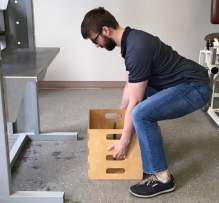
If you find that lifting with your legs is too difficult, then it’s time to hit the gym or at least start doing some leg strengthening exercises at home to combat your weakness.
Sit Up Straight!
Another way to prevent pain in your QL muscle region is to sit and/or stand using proper posture. Keeping your shoulders back and your neck and spine straight will help maintain your core strength and prevent you from becoming stuck in a slouched position.
Alternating Heat and Ice
The most simple and sometimes the most effective treatment for stiff or painful QL muscles is to apply heat and/or ice. When doing so, be sure not to keep either applied to the affected area for more than 15-minutes at a time.
You know the old saying; too much of a good thing can be bad, and using too much heat or ice can be just that. Too much of either thing can cause more issues and slow the healing process.
Take a Break!
Whether you are spending long hours behind a desk or working on your feet all day, it is important that you take a break every so often to stretch and move around. More injuries occur when a person’s body is not properly stretched.
Trigger Point Injections
As medicine is progressing, more and more people are turning to alternative ways of treating their QL muscle pain, such as:
- Dry needling
- Bupivacaine injections
- Cortisone injections
- Lidocaine injections
In some cases, a cocktail of medications will be given in the injection, such as combining bupivacaine with cortisone or other combinations as your doctor sees fit.
Simple Lifestyle Changes Can Greatly Reduce Pain
By following the tips in this article, you have a greater chance of eliminating or minimizing the pain you or a loved one has been experiencing in the QL muscle region.
Remember to keep moving and take breaks often to keep from getting stiff. Managing your weight, quitting smoking, healthy eating, and proper exercise are the best ways to live a healthy and pain-free life.
Sources:
(https://www.morningsideacupuncturenyc.com/blog/acupuncture-for-ql-trigger-points),
(https://www.remedypainsolutions.com/blog/trigger-point-injections-for-pain-relief/),
(https://hpi.georgetown.edu/backpain/),
(https://www.physio-pedia.com/Quadratus_Lumborum_Syndrome),
Disclaimer: The information provided in this post is for educational purposes only. This is not a substitute for a medical appointment. Please refer to your physician before starting any exercise program.
